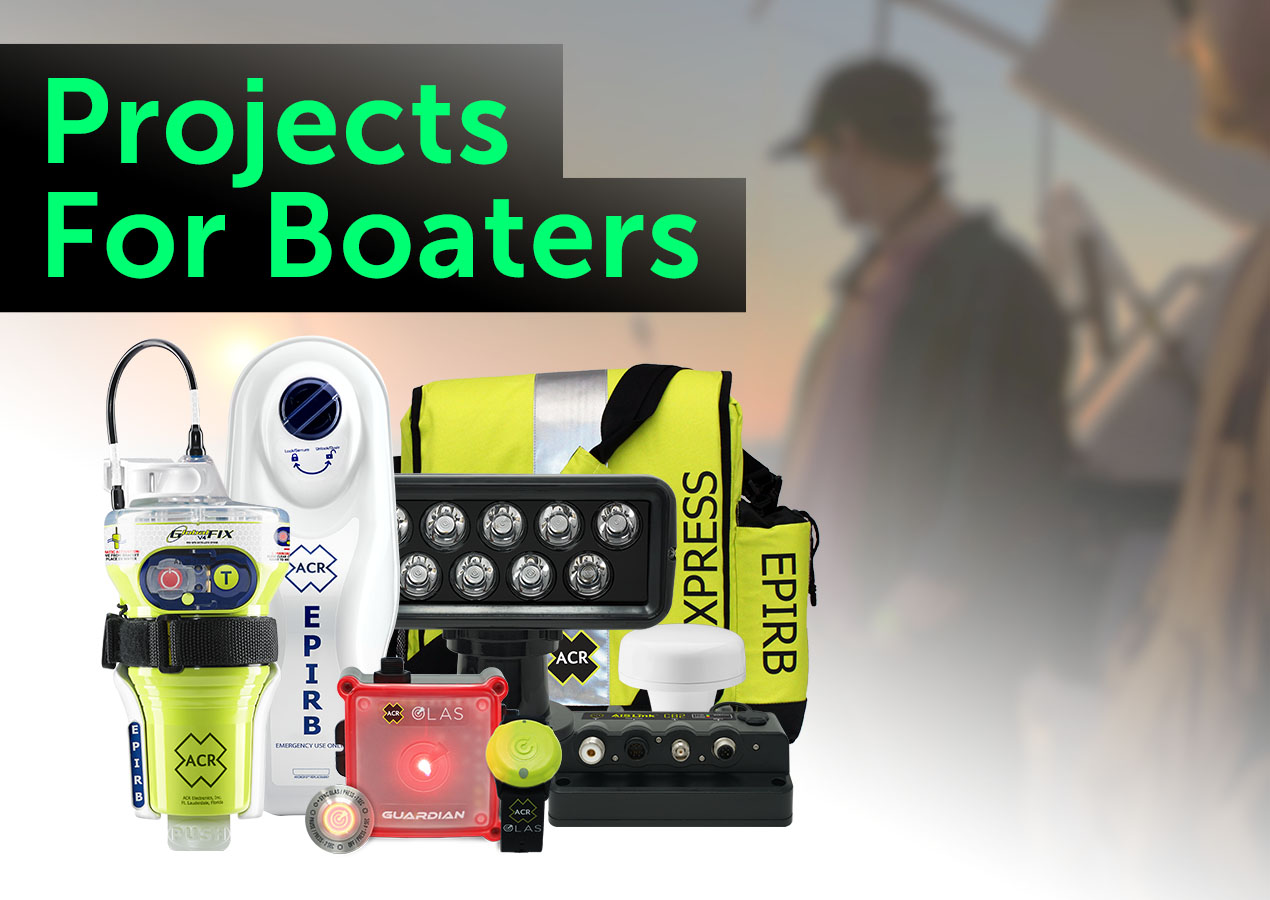
5 Boat Projects That Will Make Your Next Trip On The Water Safer
Posted on May 15, 2020
Staying safe on the water means you are prepared.
Here are 5 boat improvement projects to keep you and your family safe this boating season.
- Add an LED searchlight. All powerboats should install a searchlight to help with navigation and docking at night. They are also critical for identifying unknown objects, such as searching for a man-overboard (MOB) and looking for unlit marker buoys or posts when navigating channel entrances. There are online videos that will walk you through the steps on where and how a searchlight should be installed.
- Choose the right searchlight for your boat: Plastic Housings are more affordable / Marine Grade Aluminum Housings last for decades
- Here is an install video that can help you with your project.
- Shop the largest selection of LED Searchlights for your boat
- Install an Automatic Identification System (AIS). This digital VHF radio-based transponder system make your chartplotters dynamic with live ship data in the area for messaging, safety, and the prevention of collisions and being run down by another ship. The system uses GPS, VHF radio and digital processing to automatically communicate between vessels without any operator interaction — it will alert you to other nearby boats even if they are beyond your visual range. There are different classes of AIS units, but Class B system, like the ACR AISLink CB2, are most often used for recreational vessels. Add some AIS Man Overboard beacons and now your AIS is full MOB System as well.
- Here is an install video that can help you with your project
- Mounting an EPIRB. There are both manual and automatic deployment brackets that can be used to mount an EPIRB using a few screws. If you currently have an EPIRB on board, note that it should be serviced five years from the installation date, but no later than the battery expiry date. Find a location that it easy to access the EPIRB and yet out of your way, like mounted on the side of your console for a manual release bracket.
- Here is an install video that can help you with your project
- Add a wireless engine kill switch. Wireless kill switches are a smart safety feature for boaters who operate outboard or stern drive-powered boats. Wireless kill switch systems include a dash-mounted hub that connects to small transponders. The transponders can be worn on your wrist, in a pocket, or clipped to your life jacket. Some wireless kill switch systems, such as ACR OLAS Guardian, also have the dual function of acting as an instant Man Overboard (MOB) Alarm system and can connect up to 15 crew members.
- Here is an install video that can help you with your project
- Packing a ditch kit. What you pack in your ditch kit depends on the type of boating you’ll be doing (inshore or offshore). EPIRBs, Handheld waterproof VHF radio, visual signaling devices for both daylight and night, a sound signaling device (such as a whistle or air horn), a PLB (personal locator beacon), inflatable floatation device (this is in addition to a PFD for each passenger aboard), basic first-aid kit, sunscreen, water, a bailing device, and pre-packaged food (such as freeze-dried emergency food).
- This blog post gets into great detail on what you should consider packing in your Ditch kit.
- Check out this pre-packaged EPIRB Ditch Kits Now Available
Use your extra “safer at home” time wisely by knocking a few of these boating projects off of your list.
Debbie Hanson is an award-winning outdoor writer, women’s sport fishing advocate, IGFA world record holder, and freshwater charter captain living in Southwest Florida. Hanson’s written work has appeared in publications such as Florida Game & Fish Magazine, BoatUS Magazine, and USA Today Hunt & Fish. To learn more about her work, visit shefishes2.com or follow her on Instagram @shefishes2.